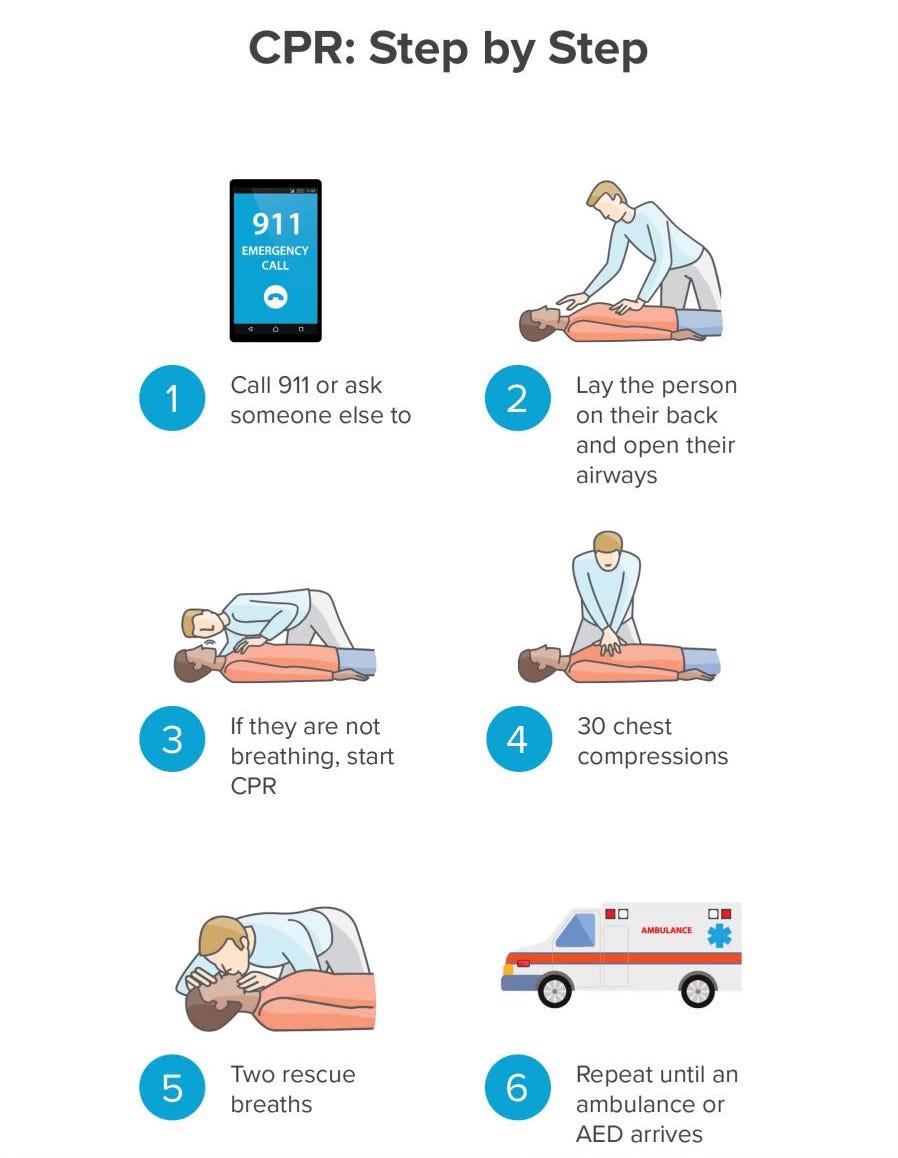UPDATED: May 30, 2025
Welcome to the Healthy Living Is Good Medicine Newsletter, a totally free, health education publication covering a wide variety of topics with original articles intended to help people lead healthier and more fulfilling lives.
Most people want healthier, more durable, and more rewarding relationships. This article, originally published for Valentine’s Day, will explore a novel perspective on creating successful relationships. By setting mutual goals that harness the power of synergy, people can reduce relationship stress and make it easier for them to resolve interpersonal conflicts.
Stress
Stress is a complex psycho-physiological phenomenon with biological and psychological components that activate the neuroendocrine system. Acute stress occurs when we are facing a perceived threat or challenge that precipitates the release of adrenaline (analogous to the drug epinephrine), a hormone produced by the adrenal gland. Adrenaline prepares the body for action, also known as the “fight-or-flight” response, which can be beneficial in short-term situations.
Our emotional response to acute stress can either exacerbate or ameliorate the amount of stress we experience. It all depends upon how we frame our physiological responses. We can choose to reframe our feelings of anxiety as being excited. Short periods of intense fear can even be enjoyable. It’s what gets people lining up to ride on a roller coaster, or go bungie-jumping.
Stress and Illness
Chronic stress can be caused by ongoing adverse circumstances. In response, the hormone cortisol (analogous to the drug hydrocortisone) is produced by the adrenal cortex. We all know that repeated exposures to too much stress can be harmful for our health. It increases our susceptibility to a wide range of mental and physical illnesses, and can make existing ones worse.
Paradoxically, not enough stimulation can impoverish our mental capabilities, stunt our emotional growth, and impede progress toward our physical fitness goals. Each person has an optimum amount of chronic stress with which they can effectively deal. Our stress tolerance can vary considerably over time, and with changing life circumstances.
The most common sources of chronic stress include money problems, pressures at work, relationship difficulties, major life changes, worries about health or having to deal with a serious illness, parenting or family demands, feeling pressed for time. or overwhelmed by too many commitments in one's day-to-day life. Factors such as job insecurity, excessive workloads, festering conflicts with relatives or colleagues, and dealing with family issues. Interpersonal relationships are often major contributors to people’s stress.
Making significant changes in our lives, even when they're changes for the better, are by themselves stressful. That’s because we’re leaving familiar territory, and venturing into uncertainties and the unknown. When making lifestyle modifications in the interest of health, it is best to incorporate those changes gradually and in small increments. We don’t want to let the stress of making big lifestyle changes sabotage our efforts.
If we haven’t learned how to flow with life’s inevitable changes, whether we consider them to be good or bad, we will tend to resist them, consciously or subconsciously. Just know that everything in this life is transitory. The only certainty is that everything changes. Leaving our comfort zone can trigger anxiety and shake up our habitual way of thinking about who we are. Even though our sense of self is an illusion, it is one that we cling to very tightly. Fortunately there are healthy ways to deal with stress due to changes.
Chronic stress impacts our neuro-endocrine and immune systems, and can even affect our gut microbiome. A prolonged state of stress can pave the way for cancer, heart disease, infectious diseases, and some psychiatric disorders. Avoiding stressors when we can, and managing stress effectively when we can't avoid it, should be a priority for all of us.
Strenuous exercise and restorative sleep are great stress-busters. I also recommend a practice known as mindfulness, which can also be part of a cognitive-based therapy program for those who need professional assistance. Mindfulness-based cognitive therapy (MBCT) is a psychotherapeutic approach that combines cognitive behavioral therapy (CBT) with mindfulness training and other psychological strategies.
Relationship Stress
I’m sure we’ve all been there. In some way, it appears that interpersonal conflicts are a part of human nature. It’s all in how we deal with those conflicts that make a huge difference in the heat of “can’t live with them, can’t live without them” situations.
Causes of relationship stress include beginning a new relationship or getting married, ending a long-standing relationship or getting divorced, having a child, or experiencing the loss of a loved one. In all cases, major life changes are involved. How a couple manages their own stress and their conflicts with each other can either strengthen or weaken their relationship. Effective conflict resolution skills can produce greater trust and increased intimacy. Unresolved conflicts can fester and produce more tensions that eventually lead to an emotional distancing that weakens their pair-bond.
There are very complex, interwoven threads consisting of individual and interpersonal issues that form the fabric of any intimate relationship. Couples typically present two different perspectives on their relationship issues, and the true picture of what is going on is always larger, more complicated, and more dynamic. It takes a highly skilled couples therapist to get to the core issues and propose effective strategies for resolving them.
The U.S. has the 13th highest divorce rate in the world. Reasons include our culture’s emphasis on individualism, increased female independence, social acceptance of divorce and the legal ease of obtaining one, and unrealistic expectations about marriage and marital roles. I’ve often remarked that the institution of marriage itself is the leading cause of divorce.
More than two out of five first marriages end in divorce, as do two-thirds of second marriages, and almost three-quarters of third marriages, according to studies by the American Psychological Association. Since the late 1990s, when pharmaceuticals such as Viagra and Cialis became available for the treatment of erectile dysfunction, the divorce rate for people aged 50 and older doubled. There’s little doubt that sexuality can be a complicating factor.
America's overall divorce rate appears to be declining because fewer people are getting married, according to a study of demographic transitions. More married couples are seeking counseling and learning effective conflict-resolution strategies.
At the same time, young people are putting off marriage and having children, resulting in greater maturity and financial stability by the time they marry. More married couples are choosing not to have children, thereby eliminating a major source of relationship stress. Couples with a dual income and no kids (“DINKs”) have a higher degree of relationship satisfaction, compared to those with children, especially when there are also financial stresses.
Reducing the number of “demand systems” in one’s life can go a long way toward reducing sources of relationship stress, although there are trade-offs involved. There’s an obvious disparity in the amount of productive energy contributed to the family by children, compared to their parents. Similarly, pets and houseplants require more energy than they contribute, but for many people the emotional benefits outweigh their energy costs.
Intimacy Versus Autonomy
Love, sex, and eventual conflicts are par for the course after the fantasies of a relationship’s romantic phase have given way to reality. Adults in committed, sexually monogamous, and emotionally intimate relationships typically experience an internal conflict between their desires for both intimacy and autonomy. Maintaining a harmonious, dynamic balance between those two psychological influences can be extraordinarily challenging and stressful, especially when one’s inner ambivalence is played out in the relationship.
Successfully negotiating one’s inner conflicts is necessary for both emotional growth and the survival of the relationship. Evolving relationships seem to move in cycles that alternate between periods of relative peace, calm, and comfort, and intervals characterized by conflicts, power struggles, and often painful opportunities for self-confrontation and personal growth.
The internal struggle of intimacy versus autonomy refers to the emotional tensions generated by wanting to feel close and connected to the person we love, while still needing our space. We want to be able to depend on them for emotional support, yet maintain our sense of independence and self-reliance. We want to have a feeling of togetherness with our partner, yet maintain our independence and identity as a separate person.
While apparently in opposition, both intimacy and autonomy are like the symbolic, complementary embrace of yin and yang; both are part of a greater, all-encompassing whole. A deficiency or excess of either one is symptomatic of deeper psychological problems, such as an avoidant attachment disorder at one extreme, or a codependent emotional fusion at the other end of the spectrum. Accommodating our own and our partner’s psychological needs and resolving our internal conflict is crucial for a healthy relationship.
People almost always differ in the degree to which they desire both intimacy and autonomy. Because those needs can fluctuate over time, finding the optimum balance in a growing and changing relationship requires ongoing communication and negotiation. There must be a mutual willingness to reveal our needs and preferences, as well as recognizing and accepting the needs and preferences of our partner. It is also essential that both people treat their partner as an ally and an equal, rather than as a competitor or enemy.
There is no such thing as a perfect balance between intimacy and autonomy. Too much intimacy can lead to feelings of suffocation or feel like the threat of losing oneself. Too much autonomy can result in increasing emotional distance and feelings of disconnection. Every relationship is unique, and the people involved will need to figure out what works best for them.
An excess of togetherness can be smothering. Too much distance, with each person doing their own thing at the expense of bonding behaviors, may be indicative of a basic incompatibility. Because relationships are dynamic and continually evolving, expect that balance to fluctuate over time, creating new sources of stress, and an urgent imperative to deal with it. It can take an outside perspective, or several, to figure out if a stressful relationship is worth investing the time and energy that will be necessary to improve it.
Synergy
Synergy occurs when the cooperative interaction of two or more entities has a combined effect that is greater than the sum of the individual contributions. Synergy thermodynamics analyzes how the interactions of a system’s working parts are able to create an energy output that is greater than its components. Figuratively speaking, the effect of synergy is to make “one plus one greater than two.”
The synchronized actions between different parts of the system enable it to increase the system's overall potential energy. Rather than violating the Laws of Thermodynamics, it has been proposed that increases in free energy can be coupled with decreases in entropy in synergetic systems. Whether that hypothesis can be tested remains to be seen.
Relationship Synergy
The best relationships have a kind of synergy, in which the individuals cooperate to produce a combined effect that is greater than the sum of their individual contributions. This is especially important for pursuing and achieving any shared goals.
Synergy requires an appreciation of each person's unique abilities and the roles that they each play in their relationship. Recognition of individual differences, including each person’s strengths and weaknesses, and understanding the importance of their contributions to the relationship, are essential.
Mutually advantageous, synergetic interpersonal relationships are typically characterized by kindness, reciprocal respect, and mutual support. They tend to be mostly harmonious, and any conflicts that may arise are collaboratively resolved. With open and honest communication, the relationship's participants are able to disclose their needs and share their concerns, leading to a deeper understanding and unconditional acceptance of each person's positions and perspectives.
Extreme examples of relationship synergy can be found when the lives of the partners literally hang in the balance, such as trad rock climbers forging new routes. An effective working relationship between a U.S. Navy fighter pilot (aka Aviation Warfare Officer) and their onboard crew person, an Electronic Warfare Officer (EWO), depends upon clear communication and understanding their complementary roles.
In the movie, Top Gun (1986), Tom Cruise played the pilot of a Grumman F-14 Tomcat, a carrier-capable, supersonic, twin-engine, two-seat, twin-tail, variable-sweep wing fighter aircraft. A Tomcat’s pilot is assisted by an EWO designated as their Radar Intercept Officer (RIO). The RIO’s primary responsibility is managing the aircraft's radar and weapons systems.
In the sequel, Top Gun: Maverick (2022), Tom Cruise played the pilot of a Boeing F/A-18E/F Super Hornet, a supersonic, twin-engine, two-seat, carrier-capable, fighter-attack jet, derived from the McDonnell Douglas F/A-18 Hornet. The plane can perform both air-to-air and air-to-ground missions, and its primary function is to suppress enemy air defenses.
Unlike the Tomcat, the Super Hornet's EWO, also known as its Weapons Systems Officer (WSO), can also fly the aircraft in an emergency situation. Although their primary role is managing the electronic warfare systems, the WSO might fly the plane during non-tactical phases of a mission, such as heading to the target area or returning to the aircraft carrier. During combat, the pilot is in charge of maneuvering the aircraft and firing its weapons.
The Super Hornet's WSO works closely with the pilot and the EWOs of other aircraft in the strike package to ensure coordinated operations in support of the mission's overall objectives. It is the WSO’s duty to analyze enemy radar and communication systems, assess existing threats, and plan effective countermeasures.
WSOs provide their pilots with critical information about the electronic battle-space, including the location and type of enemy threats. This helps the pilot make decisions that increase their combat effectiveness. It takes a coordinated effort between the two officers to accomplish the mission and safely return to base.
Synergy in Intimate Relationships
Like the relationship between a pilot and their EWO, a synergetic couple's relationship will draw upon the coordinated contributions of both individuals in pursuing and achieving their shared goals. Relationship success requires an appreciation of each person's unique abilities and the role that they play. Recognition of individual differences, including each person’s strengths and weaknesses, and understanding the importance of their separate yet equal contributions to the relationship, is necessary.
If the Super Hornet’s pilot and the EWO start fighting over control of the aircraft, it would crash and burn in short order. It is therefore not surprising that so many civilian relationships “crash and burn” when there are constant power struggles taking place. When love and sex are part of an interpersonal relationship, conflicts seem inevitable because additional psychodynamic factors are introduced, such as the intimacy versus autonomy conundrum mentioned earlier.
Fortunately for their fictional missions, Maverick and his EWO weren't lovers, making it easier for them to get the job done without the added complication of interpersonal melodramas. They didn’t fight over who was in charge of flying the plane. In the real world, however, most intimate relationships aren't synergetic, and consequently couples waste a considerable amount of time and energy through their overt and covert conflicts.
Couples’ counselors have noted that, “It's remarkable what it takes to get along with those we love.” Partners who survive their unproductive conflicts and emerge with conflict resolution skills that strengthen their relationship, just might face a future together that holds the potential for synergy. I do hope synergy is something that you are currently experiencing, or soon will, and that you won’t be willing to settle for anything less!
If you are dating, be very skeptical about any apparent potential for a future relationship that can be built upon synergy. It is quite uncommon to find a synergic connection right away, and most couples will never be able to experience it, because they are attracted to each other for the wrong reasons. If you are willing to view the other person as an applicant for an extremely important position in your life, and they are looking at you with the same kind of objectivity, it may mean going through a number of trial runs before both people are able to find a good fit. Be patient, and willing to persevere, and you will eventually reap immense rewards.
Synergy in a relationship can be recognized because it clearly benefits both people’s health and happiness. It may also enhance their survival, even if they’re not sharing the cockpit of a fighter jet. And, speaking of survival, something to keep in mind if you’re in an intimate relationship and are over the age of 50: “Safe sex” means that your partner knows how to perform CPR.
― ― ―
These Posts can be updated at any time. Please check back here again to find the most up-to-date information.
Find a lot more of my articles about Healthy Living in my Post Archive.
Be sure to share my Website Link with others via your social media accounts. You can help friends and followers become healthier by suggesting they subscribe to my totally free Newsletter.









